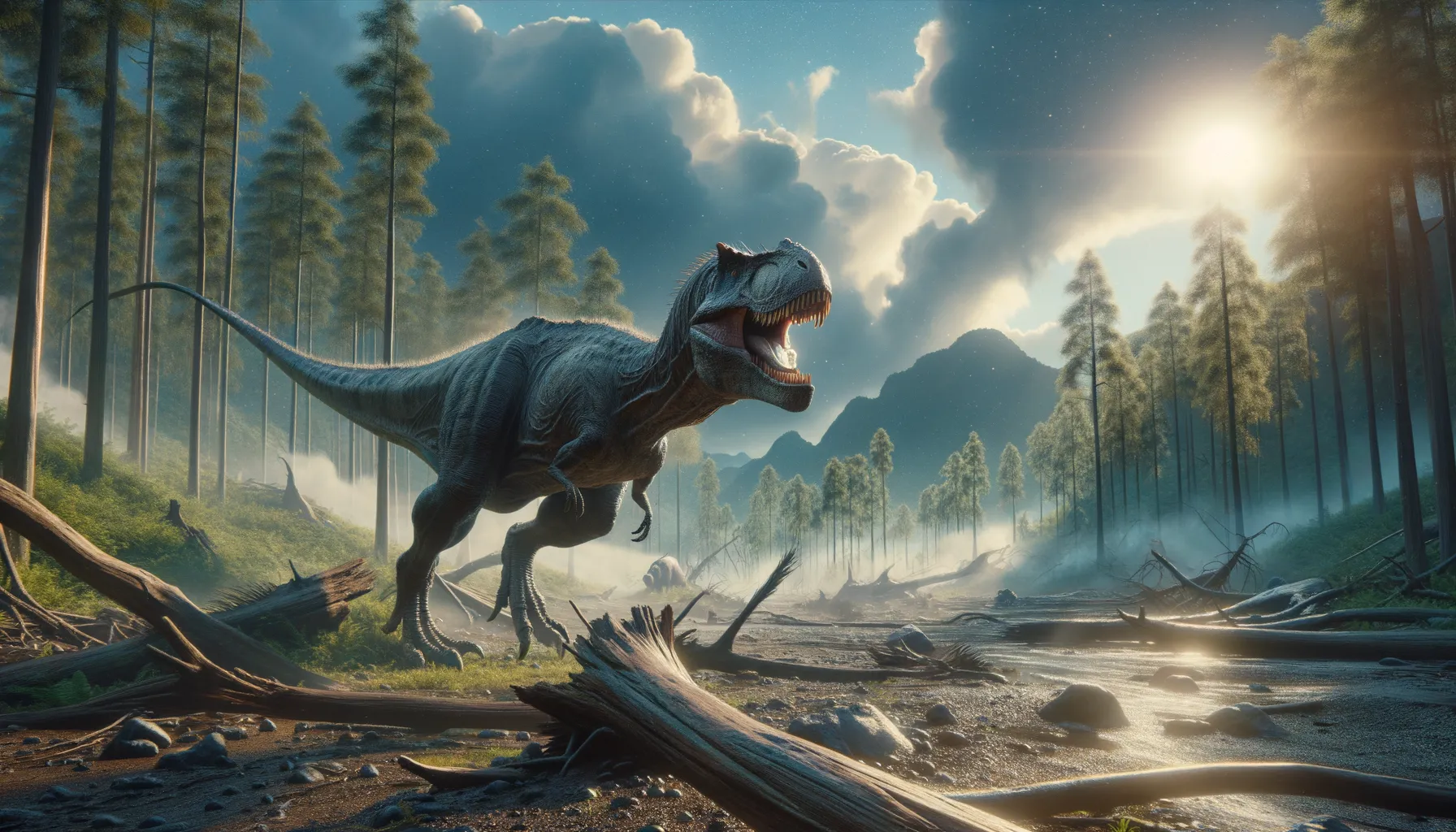
Szechuanosaurus
Jurassic giant of the East.
Period
Jurassic
Length
About 7 meters from head to tail.
Height
Approximately 2 to 3 meters at the hips.
Weight
Estimated between 1,000 and 2,000 kilograms.
Szechuanosaurus was a large carnivorous dinosaur that roamed the earth during the Middle Jurassic period. Known for its predatory nature, this theropod dinosaur lived in what is now known as China. Despite an incomplete fossil record, Szechuanosaurus is believed to have been a formidable predator with sharp teeth and a robust body. Its discovery provides insights into the diverse theropods that existed in ancient Asia.
Diet
Szechuanosaurus was a carnivore, primarily feeding on other dinosaurs. Its sharp teeth suggest it was capable of tackling smaller prey with ease.
Hunting
Szechuanosaurus likely hunted alone or in small groups. Its predatory skills were adapted to ambush tactics, relying on its strong build to overpower prey.
Environmental challenges
Living in the dense forests of Jurassic China, Szechuanosaurus faced predators and competition from other large theropods. It had to navigate a rugged landscape with varying climates, from humid to semi-arid. Seasonal changes would have impacted its hunting patterns and availability of prey.
Speed
Moderate, comparable to other large theropods.
Lifespan
Around 20 to 30 years in the wild.
First discovery
First discovered in Sichuan Province, China in 1942.
Fun Facts
- Szechuanosaurus was discovered in the Sichuan Province of China, making its name a nod to its geographic roots.
- This dinosaur lived during the Middle Jurassic period, around 160 million years ago.
- Szechuanosaurus was a carnivorous dinosaur, likely feeding on smaller animals in its habitat.
- Although its remains are fragmentary, Szechuanosaurus is believed to be a medium-sized theropod, meaning it moved on two legs.
- The first fossils of Szechuanosaurus were found in the 1940s, sparking interest in prehistoric life in Asia.
- Szechuanosaurus is often grouped with other meat-eating dinosaurs like Allosaurus, due to similarities in its teeth.
- Despite its intriguing name, the exact classification of Szechuanosaurus is still debated among paleontologists.
Growth and Development
Evidence suggests that Szechuanosaurus experienced relatively rapid growth during its early years. Juvenile dinosaurs likely had to fend for themselves at a young age. Their development would have been crucial to surviving in a world filled with larger, more aggressive predators.
Habitat
Szechuanosaurus thrived in lush, forested areas with an abundance of prey species. The region experienced climatic variations, leading to diverse ecosystems from swamps to semi-arid plains. Water sources such as rivers and lakes would have been crucial for sustenance.
Interaction with other species
Szechuanosaurus coexisted with other dinosaur species, interacting through competition for food and territory. It likely avoided larger predators by hunting smaller, weaker species. Social interactions were minimal, as solitary hunting was more energy-efficient.
Natural lifespan
In the wild, it typically lived up to three decades.
Reproduction
Reproduction involved laying eggs, similar to other theropods. Nests were likely built in secluded areas to protect young from predators. Parental care may have been involved, though evidence is sparse.
Social behaviour
As a generally solitary predator, Szechuanosaurus was not known for social behavior. Interactions with others of its kind were likely centered around competition for food. Its lifestyle demanded a solitary existence to minimize competition and maximize hunting success.
Fossil locations
Fossils of Szechuanosaurus have been predominantly found in the Sichuan Province of China. Key sites include the Middle Jurassic Shaximiao Formation, known for its rich variety of dinosaur fossils. These discoveries help reconstruct the prehistoric ecosystem where Szechuanosaurus lived.
